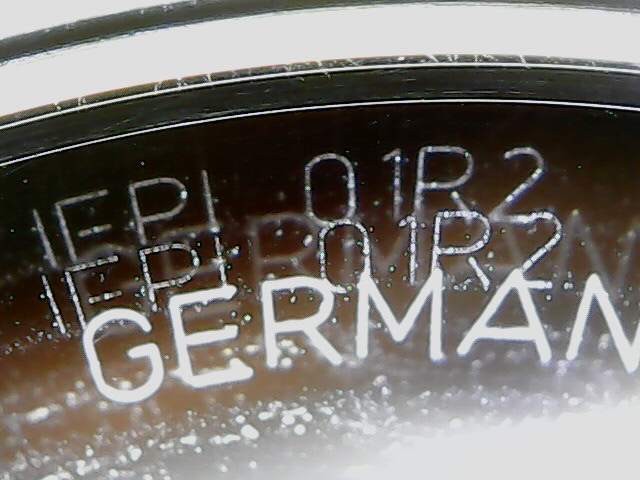after a brief dive into the world of CD manufacturing, I thought it’d be good to have this information in one spot.
edit: now a wiki user page!~ User:UltimateRiff/CD Manufacturing and Matrix Guide - MusicBrainz Wiki
edit 2: now a proper wiki page!~ CD Manufacturing and Matrix Guide - MusicBrainz Wiki
The Basics
but what even is an matrix? well, you came to the right place! ![]()
you’ll find the matrix on the inner ring on a CD, DVD, or Blu-ray, usually on the bottom (silver) side of the disc, but on some older discs it’ll be visible from the top. a couple examples from CDs:
in addition to the alphanumeric code around the ring (aka mirror band), on discs made after 1994 there are two numbers marked IFPI; these are the mastering and mould SIDs.
taking the second example above, the mastering SID can be read as IFPI LT05 underneath where it reads “6037 - FIVE IRON”. mastering SIDs appear in the mirror band and always start with “L”. this can tell you where the glass master for the disc was made. (note that mould SIDs can also start with “L”? needs checking)
the mould SID is usually harder to spot. it’s molded into the plastic of the disc in the (usually) clear part around the hub. as such, it doesn’t usually show up on scans (IFPI A603 is barely visible near the top on the second example). an example picture of a typical mould SID; top left, just on the edge of the light. this code can tell you where the disc was pressed.
sometimes, you’ll also find the pressing and mastering credits in plain text in the matrix or pressed into the hub. for example, many EMI Uden glass masters are credited as such, and the second example has RAINBO CA stamped in the clear hub area (can barely be made out near the bottom of the image).
each SID actually refers to a different machine, either a Laser Beam Recorder (LBR) for glass masters, or a stamper or unique mould for pressing.
there are several lists of IFPI codes, including ones from redump, Pink Floyd Archives, Madonna Discography, and others. some may be more up-to-date than others. Discogs label pages also often include a list of SIDs related to a particular pressing plant or label, see EMI Uden above or MediaMotion, for example.
do note, however, often SIDs can be transferred due to different plant owners, so they don’t always relate to a label exactly one-to-one (although places are more stable? need confirmation). see how IFPI 15## is both used by EMI Uden and MediaMotion at different times.
How to Credit
note, there is currently no real standard as to how to enter matrix codes in the annotation, this is just how I do it.
to get nice-looking headers like the ones here and to make annotation searching easy, you can copy this into the annotation:
== Matrix ==
=== Disc one ===
* {company logo} #####@@-##@@ ('''Mastering SID:''' IFPI xxxx '''Mould SID:''' IFPI xxxx)
=== Disc two ===
* {another matrix code goes here}
you should start the code at a place that makes sense, usually after the barcode section (when it exists)
for company logos, I put them in curly brackets, occasionally I’ll also link to an image of the logo from Discogs, if I think it’ll help. if there’s already an annotation, I’ll usually add the matrix to the bottom, since more often the annotation that’s already present is more generally interesting and helpful for identification than the matrix code.
On Label and Place Pages
I don’t usually see SIDs listed on MusicBrainz label and pressing plant entries, but there’s no reason not to add them if you wish. an example I recently added is MediaMotion’s annotation. you can also add links to other labels and pressing plants that inherited SIDs from or to the entity in question.
an example to copy-paste:
== Identification ==
The following SID codes may appear on CDs manufactured by {company name} (but as this manufacturer has been known by other names before and/or after, SID codes should not be used to credit {company name} where its name is not shown).
=== Mastering SID codes ===
* IFPI ****
=== Mould SID codes ===
* IFPI *****
* IFPI ****
Helpful Links
- a MetaBrainz thread with a lot of helpful information
- (more to come?)
Helpful People
this is more to get eyes on this post, but @IvanDobsky, @ernstlx, and others are quite familiar with pressing details, especially in Europe.
lemme know if there’s anything I missed, and feel free to add to this~



